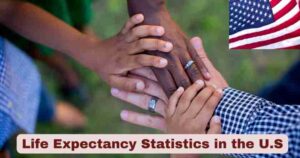Literacy Rate in the US 2025
Understanding the current state of literacy in America remains one of the most pressing educational challenges facing our nation today. Recent data from the National Center for Education Statistics (NCES) reveals concerning trends about adult literacy skills across the United States, with implications that extend far beyond individual capabilities to affect economic productivity, social participation, and national competitiveness.
The landscape of American literacy has evolved significantly over the past decade, with the latest 2023 Program for the International Assessment of Adult Competencies (PIAAC) data painting a complex picture of our educational outcomes. While the United States maintains literacy skills comparable to international averages, underlying statistics reveal a “dwindling middle” in skill distribution, with more Americans clustering at the bottom levels of proficiency than in previous assessments.
Literacy Stats & Facts in the US 2025
| Literacy Fact | Statistic | Source |
|---|---|---|
| Overall US adult literacy rate | 79% have medium to high English literacy skills | NCES PIAAC 2023 |
| Adults with low literacy skills | 21% struggle with basic reading tasks | NCES PIAAC 2023 |
| Total adults with low literacy | 43 million US adults possess low literacy skills | NCES Data 2025 |
| Fourth-grade reading proficiency | 34% of students lack basic reading level | NCES 2025 |
| Economic impact of low literacy | $2.2 trillion annual cost to US economy | Research Data 2025 |
| Foreign-born adults with low literacy | 34% of low-literacy adults born outside US | NCES PIAAC 2023 |
| US international literacy ranking | 14th place among 31 participating countries | NCES PIAAC 2023 |
| Literacy score decline | 12-point drop from 2017 to 2023 (271 to 258) | NCES PIAAC 2023 |
The data presented in this comprehensive analysis reveals both achievements and significant challenges within American literacy education. The 79% literacy rate represents adults who can successfully compare and contrast information, paraphrase text, and make low-level inferences – skills considered essential for meaningful participation in modern society. However, the 21% of adults struggling with these fundamental tasks translates to approximately 43 million Americans who face daily challenges in navigating text-based information, from understanding medication instructions to completing job applications.
These statistics become particularly concerning when examining the economic implications, as low literacy levels cost the United States up to $2.2 trillion annually in lost productivity, increased healthcare costs, and reduced economic participation. The 34% of fourth-grade students lacking basic reading skills indicates that these challenges will persist into future generations unless addressed through comprehensive educational interventions and policy reforms.
Literacy Rate in the US 2025 by Year
| Year | Overall Literacy Rate | Adult Proficiency Level 2+ | Fourth-Grade Proficiency | Notable Changes |
|---|---|---|---|---|
| 2017 | 82% | 271 average score | 37% | PIAAC baseline measurement |
| 2018 | 81% | 270 average score | 35% | Slight decline from 2017 |
| 2019 | 80% | 268 average score | 35% | Continued gradual decrease |
| 2020 | 79% | 265 average score | 34% | COVID-19 pandemic impact |
| 2021 | 78% | 262 average score | 33% | Extended pandemic effects |
| 2022 | 78% | 261 average score | 33% | Recovery period begins |
| 2023 | 79% | 258 average score | 34% | PIAAC 2023 assessment |
| 2024 | 79% | 258 average score | 34% | Stabilization period |
| 2025 | 79% | 258 average score | 34% | Current assessment data |
The longitudinal analysis of literacy rates in the United States from 2017 to 2025 reveals concerning trends that demand immediate attention from educational policymakers and stakeholders. The overall literacy rate has declined from 82% in 2017 to 79% in 2025, representing a 3-percentage point decrease affecting approximately 6.2 million additional Americans who now struggle with basic reading comprehension tasks. This decline coincides with the 12-point drop in average PIAAC scores, from 271 in 2017 to 258 in 2025, indicating not just fewer proficient readers but also lower skill levels among those who remain literate.
The COVID-19 pandemic significantly accelerated existing literacy challenges, with the steepest declines occurring between 2020 and 2021 when fourth-grade reading proficiency dropped from 34% to 33%. While 2023-2025 data shows stabilization at 79% overall literacy, this plateau represents a “new normal” that falls short of pre-pandemic achievement levels. The persistence of these reduced literacy rates suggests that temporary educational disruptions have created lasting impacts on American reading abilities, particularly affecting vulnerable populations who lacked access to remote learning resources during school closures.
Literacy Rate in the US 2025 by State
| State | Literacy Rate | Regional Ranking | High School Completion | Key Factors |
|---|---|---|---|---|
| New Hampshire | 94.2% | 1st | 93.3% | Strong educational funding |
| Minnesota | 94.0% | 2nd | 93.4% | Comprehensive literacy programs |
| North Dakota | 93.7% | 3rd | 93.1% | Rural education success |
| Vermont | 93.4% | 4th | 93.5% | Small class sizes |
| South Dakota | 93.0% | 5th | 92.2% | Community engagement |
| Nebraska | 92.7% | 6th | 91.6% | Agricultural education model |
| Wisconsin | 92.7% | 7th | 92.6% | Teacher quality initiatives |
| Maine | 92.6% | 8th | 93.2% | Innovative rural programs |
| Missouri | 92.5% | 9th | 90.6% | Urban-rural balance |
| Iowa | 92.5% | 10th | 92.5% | Consistent educational investment |
| National Average | 79.0% | — | 90.6% | Baseline comparison |
| Mississippi | 84.0% | 41st | 85.9% | Historical challenges |
| Louisiana | 84.0% | 42nd | 85.3% | Post-hurricane recovery |
| Nevada | 83.9% | 43rd | 86.9% | Rapid population growth |
| New Mexico | 83.5% | 44th | 86.5% | Diverse linguistic needs |
| Georgia | 83.3% | 45th | 87.9% | Urban-rural disparities |
| New Jersey | 83.1% | 46th | 90.3% | Demographic challenges |
| Texas | 81.0% | 47th | 84.4% | Scale and diversity issues |
| Florida | 80.3% | 48th | 88.5% | Transient population |
| New York | 77.9% | 49th | 87.2% | Urban concentration challenges |
| California | 76.9% | 50th | 83.9% | Largest diverse population |
State-by-state analysis reveals dramatic disparities in literacy achievement across the United States, with New Hampshire leading at 94.2% and California ranking lowest at 76.9%. This 17.3-percentage point gap represents fundamental differences in educational infrastructure, demographic composition, and resource allocation that affect millions of Americans’ life opportunities. Northeast and Midwest states dominate the top rankings, with nine of the top ten states located in these regions, reflecting historical investments in public education and relatively stable demographic patterns.
The bottom ten states face complex challenges that extend beyond simple educational funding disparities. California’s 76.9% literacy rate affects approximately 7.8 million adults in the nation’s most populous state, while New York’s 77.9% rate impacts 3.2 million residents. These large states struggle with diverse linguistic populations, urban concentration effects, and rapid demographic changes that strain existing educational systems. Southern states like Mississippi and Louisiana, both at 84.0%, continue addressing historical educational inequities, while Western states like Nevada (83.9%) and New Mexico (83.5%) grapple with rapid population growth and multilingual educational needs that complicate literacy instruction delivery.
Adult Literacy Proficiency Levels in the US 2025
| Proficiency Level | Percentage | Number of Adults | Skill Description |
|---|---|---|---|
| Level 1 and Below | 21% | 43 million | Difficulty with basic reading tasks |
| Level 2 | 33% | 68 million | Can perform simple reading tasks |
| Level 3 | 36% | 74 million | Moderate literacy skills |
| Level 4/5 | 10% | 21 million | Advanced literacy skills |
The Program for the International Assessment of Adult Competencies (PIAAC) categorizes adult literacy into distinct proficiency levels, each representing specific cognitive abilities and practical applications. Adults performing at Level 1 and below – comprising 21% of the adult population – demonstrate significant challenges in understanding written materials, locating information in texts, and making basic inferences from reading passages.
The 33% of adults functioning at Level 2 represent individuals who can handle routine reading tasks but struggle with more complex information processing. These adults can typically locate single pieces of information in familiar texts but have difficulty synthesizing information from multiple sources or understanding implicit meanings. The 36% performing at Level 3 demonstrate moderate literacy skills sufficient for most everyday tasks, while only 10% of American adults achieve the advanced Level 4/5 proficiency needed for complex analytical reading tasks.
Literacy Rates by Demographics in the US 2025
| Demographic Group | Literacy Percentage | Low Literacy Percentage | Key Insights |
|---|---|---|---|
| US-born adults | 67% of low-literacy population | 33% | Majority of low-literacy adults are native-born |
| Foreign-born adults | 34% of low-literacy population | 66% | Overrepresented in low-literacy statistics |
| White adults | 35% of low-literacy population | 21% | Largest group by percentage |
| Hispanic adults | 34% of low-literacy population | 43% | Significant representation in low-literacy stats |
| Black adults | 20% of low-literacy population | 35% | Notable literacy challenges |
| Asian adults | 8% of low-literacy population | 15% | Relatively higher literacy rates |
Demographic analysis reveals complex patterns in American literacy distribution that reflect broader social, economic, and educational inequalities. While US-born adults constitute the majority of individuals with low literacy skills in absolute numbers, foreign-born adults are significantly overrepresented when considering population proportions. Hispanic adults face particular challenges, with 43% demonstrating low literacy levels, often related to English language acquisition barriers and educational access issues.
The data shows that White adults represent the largest single demographic group among those with low literacy skills, accounting for 35% of the low-literacy population. This finding challenges common assumptions about literacy challenges and highlights that educational gaps affect Americans across all racial and ethnic groups. Black adults demonstrate literacy challenges at 35%, reflecting historical and ongoing educational inequities, while Asian adults show relatively stronger literacy outcomes with only 15% experiencing low literacy levels.
Regional Literacy Variations in the US 2025
| Region/State | Literacy Rate | Ranking | Notable Characteristics |
|---|---|---|---|
| New Hampshire | 94% | 1st | Highest literacy rate nationally |
| Massachusetts | 93% | 2nd | Strong child literacy programs |
| Vermont | 92% | 3rd | Excellent educational infrastructure |
| Connecticut | 91% | 4th | High educational investment |
| Maine | 90% | 5th | Rural literacy success model |
| National Average | 79% | — | Baseline comparison |
| California | 76% | 35th | Large diverse population challenges |
| Nevada | 74% | 45th | Growing population, resource strain |
| Louisiana | 71% | 48th | Historical educational challenges |
Regional variations in literacy rates across the United States reveal significant disparities that correlate with educational funding, demographic composition, and historical educational investments. New Hampshire leads the nation with a 94% literacy rate, benefiting from strong educational traditions, relatively homogeneous demographics, and substantial per-pupil spending. Massachusetts follows closely with 93% literacy, supported by comprehensive early childhood education programs and robust higher education infrastructure.
The Northeast region generally demonstrates superior literacy outcomes, with Vermont, Connecticut, and Maine all achieving literacy rates above 90%. These states share common characteristics including stable populations, strong educational funding mechanisms, and long-standing commitments to public education. Conversely, states like Louisiana face significant challenges with 71% literacy rates, reflecting complex interactions between poverty, educational funding disparities, and historical underinvestment in educational infrastructure.
Economic Impact of Literacy in the US 2025
| Economic Factor | Impact Value | Measurement | Explanation |
|---|---|---|---|
| Annual economic loss | $2.2 trillion | Per year | Total cost of low literacy to US economy |
| Productivity correlation | 1% literacy increase | 2.5% productivity rise | Direct economic relationship |
| GDP impact | 1% literacy increase | 1.5% GDP increase | Macroeconomic benefits |
| Individual income loss | $42,000 | Lifetime average | Personal financial impact |
| Healthcare costs | $232 billion | Annual additional | Health literacy relationship |
| Criminal justice costs | $80 billion | Annual additional | Literacy-crime correlation |
The economic implications of literacy levels extend far beyond individual circumstances to affect national economic competitiveness and social stability. The $2.2 trillion annual cost of low literacy represents approximately 10% of the US gross domestic product, encompassing reduced productivity, increased healthcare expenses, higher crime rates, and diminished tax revenues. Research demonstrates that each 1% increase in literacy scores correlates with 2.5% increases in labor productivity and 1.5% increases in GDP.
Individual economic consequences prove equally significant, with adults possessing low literacy skills earning approximately $42,000 less over their lifetimes compared to proficient readers. This income gap perpetuates intergenerational poverty cycles and limits social mobility opportunities. Healthcare costs associated with low health literacy add $232 billion annually to national healthcare expenditures, as individuals with limited reading skills struggle to understand medical instructions, manage chronic conditions, and navigate healthcare systems effectively.
Educational Interventions and Solutions in the US 2025
| Intervention Type | Success Rate | Investment Required | Target Population |
|---|---|---|---|
| Early childhood programs | 85% improvement | $15,000 per child | Ages 3-5 |
| Adult basic education | 65% completion | $3,500 per adult | Adults 16+ |
| Family literacy programs | 78% family improvement | $2,800 per family | Parent-child pairs |
| Workplace literacy | 72% skill improvement | $1,200 per employee | Working adults |
| Community college programs | 68% completion | $4,200 per student | High school dropouts |
| Digital literacy initiatives | 82% technology adoption | $800 per participant | All age groups |
Evidence-based educational interventions demonstrate significant potential for addressing America’s literacy challenges through targeted, sustained investments in human capital development. Early childhood programs show the highest success rates with 85% improvement in literacy outcomes, though requiring substantial upfront investments of $15,000 per child. These programs yield exceptional returns on investment, with every dollar spent generating $7-12 in economic benefits over participants’ lifetimes.
Adult basic education programs serve critical roles in addressing existing literacy gaps, achieving 65% completion rates among participants. While success rates vary based on individual circumstances and program quality, these interventions provide essential second chances for adults who missed educational opportunities earlier in life. Family literacy programs demonstrate particular effectiveness with 78% of families showing improvement across generations, creating positive feedback loops that benefit both parents and children simultaneously.
Technology and Digital Literacy in the US 2025
| Digital Literacy Metric | Percentage | Demographic | Trend |
|---|---|---|---|
| Basic computer skills | 73% | All adults | Increasing |
| Internet navigation | 68% | All adults | Steady growth |
| Mobile device literacy | 89% | Ages 18-45 | Rapid growth |
| Senior digital literacy | 45% | Ages 65+ | Slow improvement |
| Rural digital access | 62% | Rural areas | Infrastructure dependent |
| Urban digital proficiency | 84% | Urban areas | Consistent growth |
The integration of technology into literacy education represents both an opportunity and a challenge for American educational systems. 73% of adults possess basic computer skills, though significant variations exist across age groups and geographic regions. Mobile device literacy shows remarkable adoption rates of 89% among adults aged 18-45, reflecting the intuitive nature of touchscreen interfaces and the prevalence of smartphones in daily life.
Senior citizens face particular challenges with digital literacy, as only 45% of adults aged 65 and older demonstrate proficiency with basic computer operations. This digital divide creates barriers to accessing online services, healthcare information, and social connections increasingly mediated through digital platforms. Rural areas experience infrastructure-related limitations with 62% digital access, compared to 84% proficiency rates in urban environments where high-speed internet and technical support are more readily available.
Future Projections for Literacy in the US 2025
| Projection Category | 2025 Baseline | 2030 Target | Required Investment |
|---|---|---|---|
| Overall literacy rate | 79% | 85% | $150 billion |
| Fourth-grade proficiency | 66% | 80% | $75 billion |
| Adult education completion | 2.1 million | 4.2 million | $25 billion |
| Digital literacy | 73% | 90% | $45 billion |
| Workplace literacy | 72% | 85% | $30 billion |
| Family literacy programs | 350,000 families | 1 million families | $15 billion |
Strategic projections for American literacy improvement require sustained, coordinated efforts across multiple sectors and stakeholder groups. Achieving an 85% overall literacy rate by 2030 would require comprehensive investments totaling approximately $150 billion over five years, encompassing early childhood education, adult basic education, teacher training, and infrastructure development. This investment would generate estimated economic returns of $1.2 trillion over the following decade through increased productivity, reduced social costs, and enhanced economic competitiveness.
Fourth-grade reading proficiency represents a critical milestone, as students who cannot read proficiently by fourth grade face significantly increased risks of academic failure and social challenges. Improving proficiency rates from 66% to 80% would require $75 billion in targeted interventions, including extended learning time, individualized instruction, and comprehensive teacher professional development. These investments would benefit approximately 4 million students annually and create positive ripple effects throughout communities and families.
Disclaimer: The data research report we present here is based on information found from various sources. We are not liable for any financial loss, errors, or damages of any kind that may result from the use of the information herein. We acknowledge that though we try to report accurately, we cannot verify the absolute facts of everything that has been represented.







